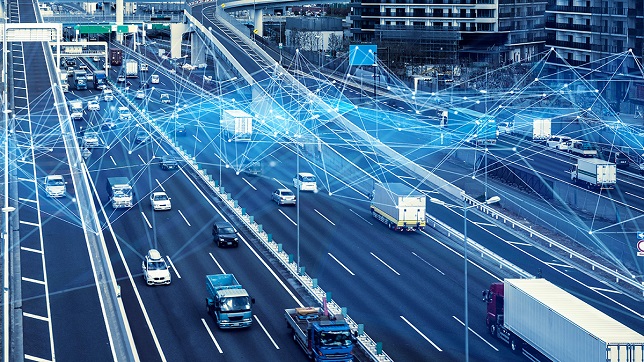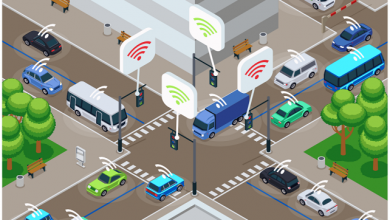Opportunities and challenges for the growth of connected mobility in India

Imagine a scenario where you are driving on a foggy winter morning, and you get a (voice-based) warning notification from your car regarding a vehicle pile-up ahead, and a potential crash is averted. While this may sound unrealistic to most of us right now, this, beyond doubt, would be among the vehicle features in a not-so-distant future. It is a widely known fact that over 90% of road accidents are attributable to human error. Connected mobility is likely to transform this and make road travel much safer. The full potential of the modern-day safety features depends on how information is shared among stakeholders. And connected cars boast of the capabilities to efficiently disseminate such information in milliseconds.
There was a time when people bought cars just to move from point A to B safely, conveniently, and economically with very few available models to choose from. Then came the next generation, when the availability of options became plenty, and OEMs started to differentiate themselves based on engine technology and capability, horsepower and speed, fuel efficiency, braking, and other safety features. While all these aspects are still important, how OEMs differentiate themselves and customers choose cars will not be the same in the coming years. Connectivity features are set to redefine our relationships with our cars. The rise of ‘Apps’ turned cell phones into versatile devices with unimaginable capabilities. In the same way, the car connectivity features could be disruptive. Personalization and focus on the consumer are expected to revolutionize product manufacturing.
Technology is evolving rapidly, and the internet has changed the way people communicate or handle their day-to-day tasks. The world is ‘connected,’ and answers to the most difficult questions can now be found on the internet. Why would cars not do the same when almost everything is connected through the internet?
The government mandates regarding connected technology in vehicles are further driving this change. The Indian government (through AIS140) has mandated connected services (including vehicle tracking and emergency buttons) for all public service vehicles, including public, private taxis, and buses. This has also boosted connected mobility, at least for commercial fleets. This space will likely see more regulatory action given that road accidents kill more than 325[1] people every day in India, and traffic congestion costs the economy 1.44 lakh crores[2] in just four metropolitan Indian cities – Delhi, Mumbai, Bangalore, and Kolkata. It is indeed a frightening statistic that India tops the world with 11% of global deaths in road accidents[3]. Connected mobility presents an enormous opportunity to prevent accidents and reduce fuel consumption and delays during daily commutes.
A new future for the Auto industry
With intelligent automation enabling new entrants to sense the opportunity and make fast moves to tap the potential, a new future is being written for the industry. Companies that have spent decades perfecting the art of vehicle production are also reinventing themselves. Automakers have been rolling-out connected car offerings to Indian consumers for some time. These connected features/technologies are positioned as differentiators.
In the last year, there has been an increase in the launch of SIM card embedded cars. While earlier this was limited to premium vehicles, embedded connected mobility is quickly permeating down to the economy segment vehicles. However, overall, the connected car market is still in its nascent stage in India and is expected to grow faster as industry participants look to tap the enormous potential. The trend toward vehicle electrification further provides a boost to connected mobility and will remain one of the key drivers in the mid to long term.
OEMs current connected car offerings in the mass market could be categorized into the following three broad buckets:
- Convenience – Features such as remote lock/unlock, remote lights on/off, and remote starting the car and operating the AC
- Vehicle health check – View car health dashboard, alerts about critical car parameters including battery-related alerts
- Safety and security – SOS SMS to emergency contact in case of accident and remote immobilisation when car is stolen
Key challenges and risks
While the connected car market in the country is poised for solid growth over the next few years, a few areas (provided below) could impede its growth.
Cybersecurity: While car connectivity has significant advantages, there is also a flip side. As connected cars generate an increasing amount of data exchanged, processed, and stored, it leads to a potential rise in the number of attack vectors. As a result, our personal, financial, and car data can attract hackers. In extreme scenarios, hackers could also gain access to and control the vehicle. Globally, security researchers have shown how cars could potentially be hacked remotely. Automakers in mature markets such as the US, and Europe have launched bug bounty programs to be prepared against this threat. In summary, cybersecurity is the most important factor (especially since the Indian market is nascent), and a single breach can create fear in the mind of customers and reverse the growth of the connected mobility market.
Data privacy: The issue of data privacy has also not been adequately discussed and addressed yet. Customers’ data is being shared with the car manufacturer and the mobile service provider. And currently, there’s little or no clarity on whether the carrier (and, for that matter, even the car manufacturer) can or cannot share that data with external third parties for profit. In most cases, the automotive data is not encrypted and can be shared with third parties. For example, data on media content we consume in the car could potentially be shared with e-commerce players, enabling targeted advertising on our digital devices.
Reliable network coverage: Another significant challenge for automakers is achieving reliable connectivity. Maintaining broader coverage, state-of-the-art connectivity, and network security are challenging and require an excellent understanding and long-standing relationship between Automakers and Mobile Network Operators (MNOs). A slight lag or smallest lapse in connectivity services can ruin the customer experience and could potentially lead to inappropriate judgment in case of emergencies.
Global semi-conductor shortage: Supply chain issues, including the semi-conductor shortage, has dealt a big blow to the auto industry. We are seeing a situation where manufacturers and tier 1 suppliers have to do with what they have rather than develop what they need or, most importantly, what consumers want. In some cases, automakers have been forced to ship out cars without some of the connectivity and other technology features.
Considerations for industry stakeholders
While connected mobility offers numerous opportunities, the journey is fraught with several challenges. So, what are the key ingredients of success or significant considerations that could support the wider adoption of connected mobility services in our country?
Change in mindset – focus on software-driven innovation: Despite a huge revenue generation opportunity for the industry, various studies have shown that most Indian customers are still not aware or ready to pay extra for the connected services. Currently, most connected services are provided for free for one to three years, followed by an option to renew the subscription. There are numerous customer complaints about the poor user interface, unsatisfactory customer experience due to non-intuitive and complicated apps, weak network connectivity, and lack of real-time vehicle information.
Automotive is a more than 100-year-old industry focused on products, hardware, production techniques, and operational efficiencies. However, automakers are lagging in merging the two worlds of hardware and software. The lack of new ways of working results in the development of connected services that are still not meeting the expectations of a broad customer base. Therefore, it is high time for the Auto industry participants to focus on software-driven innovation and services. The training of dealership sales and service personnel on connectivity and other tech features is also critical. The rise of connected, green, shared, and autonomous mobility leads to a tectonic shift in revenue and profit pools for the industry, and incumbents must evolve along with it.
Partnerships: For convergence themes such as connected mobility, automakers need to work with an ‘Ecosystem Approach’ rather than an auto-centric mindset. How automakers can stitch cross-sector partnerships (with players from Technology, Telecom, and Energy domains) is the key to offering a wholesome connected car experience to the customer. Many OEMs might still see the new automotive entrants as competitors. Depending on their strategy and on a case-by-case basis, OEMs need to accept and work with new players as contributors to the connected services portfolio to gain a competitive advantage.
Focus on Indian consumer: India is a unique market, and we have often seen that the rules of thumb which work globally often do not work in the Indian context. Therefore, focusing on the needs and aspirations of the Indian consumer remains critically important. For example, a few automakers coming up with voice assistants interacting in local Indian languages (and accents) is a welcome move. Similarly, a focus on local apps and vernacular content could be helpful to drive further uptake.
User experience: Smartphones have become an integral part of our lives; thus, seamless car integration with the smartphone is essential. Rather than a debate on leveraging smartphones vs. cars for connectivity, the focus needs to shift toward how they can complement each other to improve user experience and help the driver remain focused on the road. The use of voice commands and physical buttons in the car rather than having to look at a smartphone every time will also help reduce driver distraction.
[1] National Crime Records Bureau data, annual ‘Crime India’ report for 2020, released September 2021
[2] Report by Uber, “Unlocking Cities: The impact of ridesharing across India, released April 2018
[3] World Bank report, released February 2021
The views reflected in this article are the views of the author and do not necessarily reflect the views of the global EY organization or its member firms.
Author:

Anuj Chandna
Assistant Director
EY GDS
Anuj Chandna is an Assistant Director with EY GDS. He has over 15 years of experience in Automotive research and consulting. Anuj focuses on Passenger vehicle, Connected and eMobility domains. He develops points of view on emerging trends, business issues and how it translates into opportunities for clients and EY teams. Anuj has represented the EY organization at numerous industry conferences and client workshops.
Published in Telematics Wire




